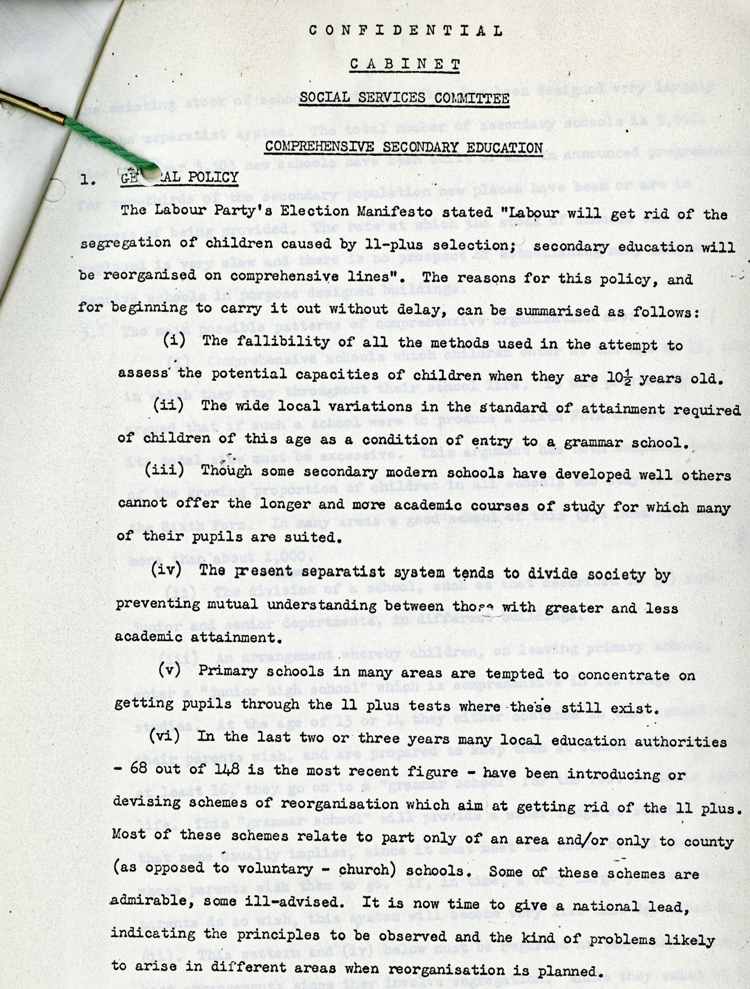
Extract from the Labour government cabinet committee policy notes about setting up comprehensive schools (ED 147/826)
Transcript
CONFIDENTIAL
CABINET
SOCIAL SERVICES COMMITTEE
COMPREHENSIVE SECONDARY EDUCATION
GENERAL POLICY
The Labour Party’s Election Manifesto stated “Labour will get rid of the segregation of children caused by 11-plus selection; secondary education will be reorganised on comprehensive lines”. The reasons for this policy, and for beginning to carry it out without delay, can be summarised as follows:
(i) The fallibility of all the methods used in the attempt to assess the potential capacities of children when they are 10½ years old.
(ii) The wide local variations in the standard of attainment required of children of this age as a condition of entry to a grammar school.
(iii) Though some secondary modern schools have developed well others cannot offer the longer and more academic courses of study for which many of their pupils are suited.
(iv) The present separatist system tends to divide society by preventing mutual understanding between those with greater and less academic attainment.
(v) Primary schools in many areas are tempted to concentrate on getting pupils through the 11 plus tests where these still exist.
(vi) In the last two or three years many local education authorities – 68 out of 148 is the most recent figure – have been introducing or devising schemes of reorganisation which aim at getting rid of the 11 plus. Most of these schemes relate to part only of an area and/or only to county (as opposed to voluntary – church) schools. Some of these schemes are admirable, some ill-advised. It is now time to give a national lead, indicating the principles to be observed and the kind of problems likely to arise in different areas when reorganisation is planned.
